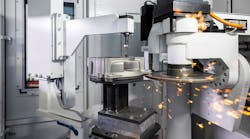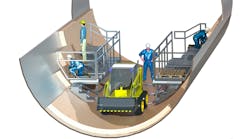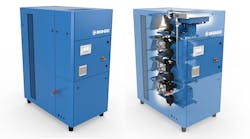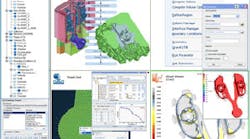As detailed by ESI, the new release includes a complete and new user environment, with a modeler that reduces preparation time because of a new methodology, new interface, and enhanced automatic assembly. Also, the first release of the new pre-processor, Visual-Cast, provides set-up of process conditions straight onto the CAD topology, instead of onto the meshing. As such, it’s possible to adapt the model to the simulation needs without resetting the process definition. This version of the Casting Simulation Suite also provides an advisor to assist in computing the mechanical properties of aluminum after age-hardening treatment, for parts like wheels, suspension components, cylinder heads, and engine blocks. (This tool was developed by Rio Tinto Alcan, and by Michel Garat in particular, ESI indicated.)
New microstructure models are available, too, for example for Ni-Resist and Compacted Graphite Iron, materials.
To ensure casting quality, new simulation functions are included for core gassing, oxide particles tracing, and prediction of burn-on, and mold penetration. Other improvements include the references drawn from global research on lightweight materials and superalloys that will enhance centrifugal casting modeling and prediction of micro-porosity.
To complement of the capabilities of its Casting Simulation Suite, ESI reported, it is now distributing a filling system design tool. The French research center CTIF (Centre Technique des Industries de la Fonderie) and ESI Group have agreed for the exclusive distribution, support, and development of SALSA 3D. This tool, developed by CTIF, calculates efficient filling systems for pressure diecasting, following experimental and fundamental rules.
SALSA 3D helps to calculate and size gating and running systems for the high-pressure diecasting process. It assists in designing gates, runners and overflows by controlling the maximum gate velocity and thickness based on the available pressure machine. This improvement offers the potential for increasing yields and reducing die development times, and allows the filling system to be validated using ProCAST or QuikCAST.
SALSA 3D will be integrated gradually into the ESI Casting Simulation Suite, toward the goal of a software combination that helps to maximize productivity, reduce development time, and improve the quality of finished castings.
.









